The country of Georgia, located near the crossroads of Europe and Asia, is about as diverse as it gets, in terms of landscapes. In particular, the hills, mountains, forests, and river valleys of central and western Georgia are chock-full of hidden gems just waiting to be discovered by curious travelers. Many of the top things to do in central and western Georgia take advantage of the region’s climate and geography, as well as its culture and rich history.

I took a once-in-a-lifetime road trip through Georgia with my pal Tim from Friendly GE in the summer of 2021. He was the perfect guide and took me to many of his favorite spots throughout the area. They included all of the things that make me excited as a travel addict. From the historical fortresses and monasteries, to the abundance of wineries, to the mouthwatering food, I was in heaven.

Whether you’re into sightseeing, history, viticulture, gastronomy, or culture, you won’t find a shortage of things to do in this part of the country. These are the top things to do in central and Western Georgia.

Our first stop in the region is Ateni, a medieval village in the Tana River valley in central Georgia. The city dates back to the 11th century, and was guarded by three fortresses. Eventually, by the 18th century, the city’s influence, size, and importance began to wane. It’s now a village in Gori District of the Shida Kartli region.

Wine and wine-making are two of the signature aspects of Georgian culture. It’s so ingrained into everyday life there that many Georgian citizens make their own wine using ancient, traditional techniques. One of many home wineries where you can try homemade Georgian wine is Wine Artisans in Ateni.

Wine Artisans is run by Andro, a friendly local man with a penchant for experimenting. Inside his home winery, you can see bottles of distilled wines made with various fruits and herbs. He’ll likely also show you his vines, distillation oven, and his qvevri room. Qvevri are large clay pots in which wine ferments. It’s an essential part of making authentic Georgian wine!

I tried a number of fantastic wines straight from his tanks. His 3-grape rose is essentially a white wine mixed with two different reds. I also loved his Impossible Wine, which is made from two grapes that many people say should never be mixed. The Naturali was almost like an Italian red wine containing currants and cherries! But I must say, their Dionysys red reserve is to die for!

In addition to the grapes themselves, various other factors affect the flavor of the wines. Everything from the water quality to the makeup of the soil makes for subtle differences in the taste. The soil in the area contains both limestone and flint, which gives local wines their unique flavors!

Wine isn’t the only thing you can enjoy at Wine Artisans. They also cook delicious Georgian cuisine that will knock your socks off! One of my favorites was the chakapuli, a hearty stew of sorts containing greens, beef, and chilies. It’s both fatty and earthy, and full of flavor!
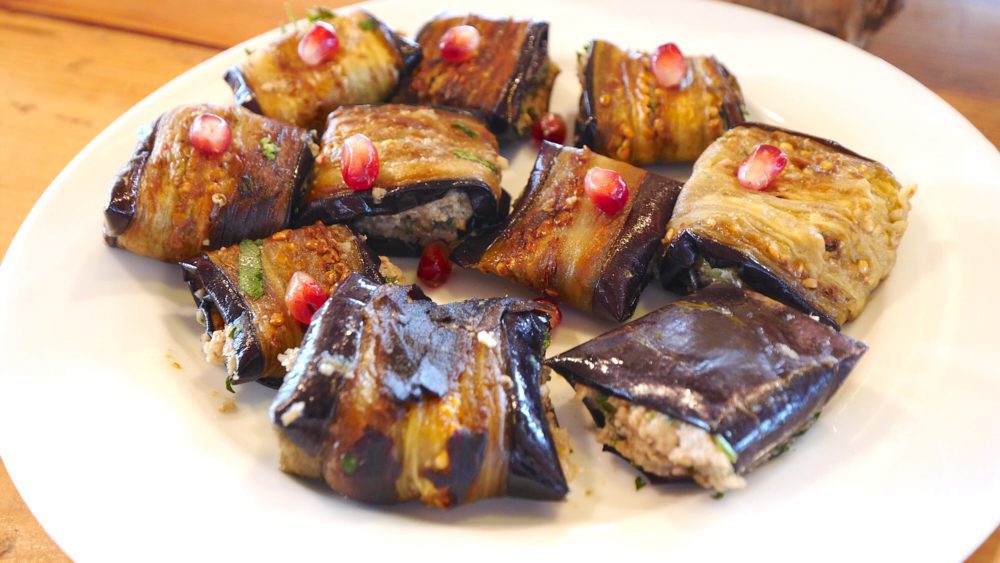
Another dish you must try there is the nigvziani badrijani, or eggplants stuffed with walnut-garlic paste. They come topped with pomegranate seeds and are surprisingly spicy! I also recommend their roasted potatoes with dill, bean salad, and a local herb called jonjoli.

Of course, you can’t have a meal in Georgia without khachapuri, arguably the country’s most popular food. This one was more like a flatbread containing lots of fresh, local cheese. It’s gooey and decadent, and oh so tasty! It makes Wine Artisans one of the top things to do in central and western Georgia alone!

Just ten to fifteen minutes away from Wine Artisans is one of the area’s main attractions, Ateni Monastery. This 7th-8th-century Georgian Orthodox church is one of the oldest and holiest churches in the country. It’s known for its massive bricks and the frescoes on its interior walls.

The large bricks on the exterior walls have some intricate carvings on them. They were fascinating to look at. Meanwhile, the frescoes inside are breathtaking. They depict various religious scenes and cover the walls and the ceiling of the church. It’s one of my favorite churches in the country and easily among my top things to do in central and western Georgia!

Not far from Ateni Monastery is Nika Vacheishvili’s Guesthouse and Wine Cellar. This comfortable, peaceful accommodation boasts 13 rooms in total. They’re modern but have a rustic aesthetic, with twin beds, a desk, and a modern bathroom.
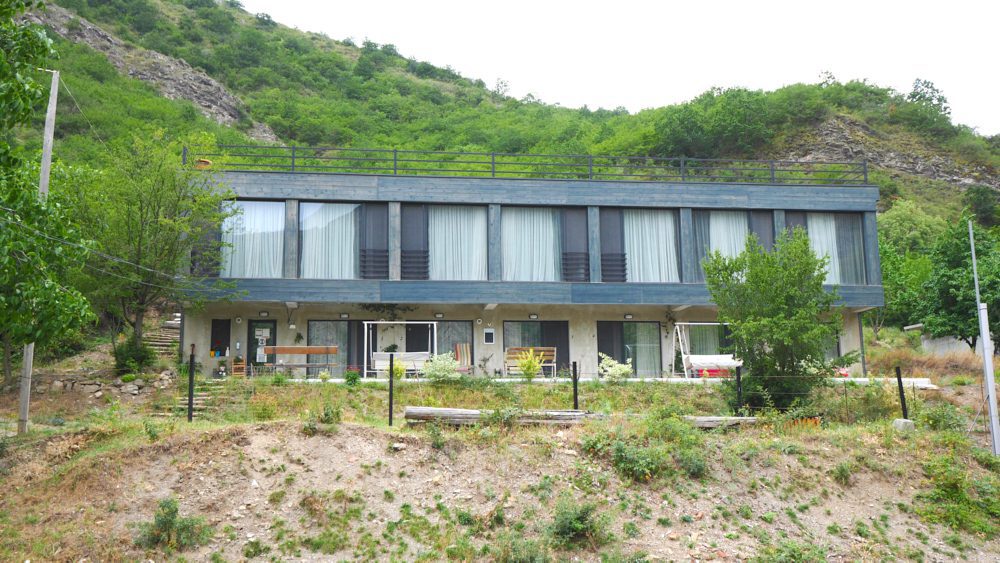
The guesthouse has a couple of terraces, including a covered one that’s used at mealtimes. They also have gardens and offer lots of chacha and wines. Be careful though, as one of their chachas is a whopping 60% alcohol, so take it slow if you’re brave enough to try it at all!

The owner, Diana, prepared us a wonderful dinner of salads, beets cooked in plum sauce, eggplant, local cheeses, and chakrakina. I loved the sour flavor of the beets in plum sauce, while the eggplant was both creamy and pungent due to the addition of some crispy onions.

The chakrakina was one of my favorites. It’s essentially a doughy flatbread stuffed with beet leaves, herbs, and cheese. It felt similar to the khachapuri I’d been eating throughout the trip, but the addition of the greens gave it a nice freshness!

Located at the meeting place of the Mtkvari and Liakhvi Rivers in central Georgia, Gori dates back to ancient times. Founded in the Hellenistic period, Gori became an important stronghold for the Georgian military in the Middle Ages. Its location serves as a bridge of sorts between eastern and western Georgia, and has contributed to its enduring importance. It’s also famously known as the birthplace of the notorious Soviet dictator Joseph Stalin.
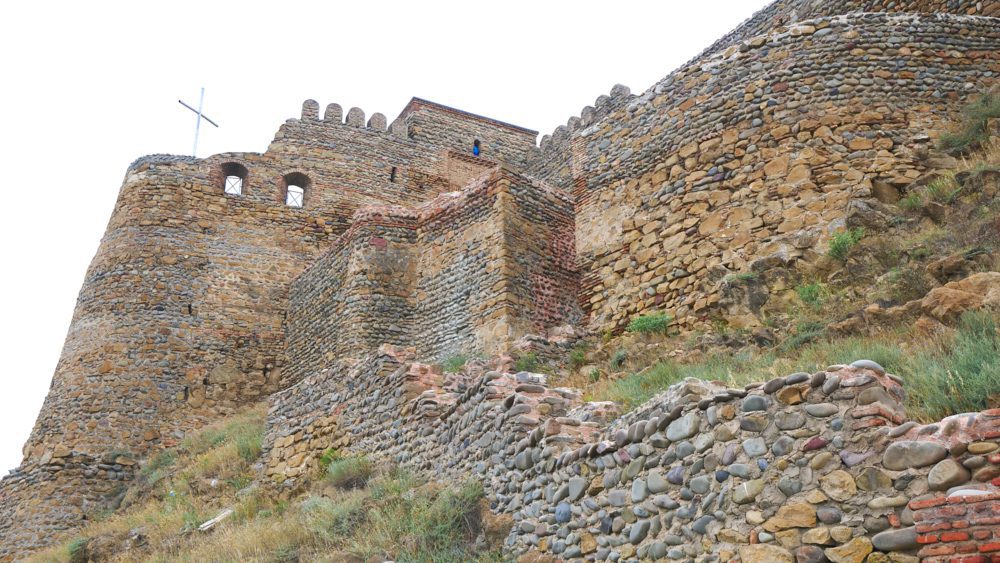
A vital reason why Gori was a military stronghold in Gori Fortress. This medieval citadel stands atop a rocky hill in the center of town. It is thought to have been built by at least the 7th century, though the version that stands today was reconstructed in the 18th century.
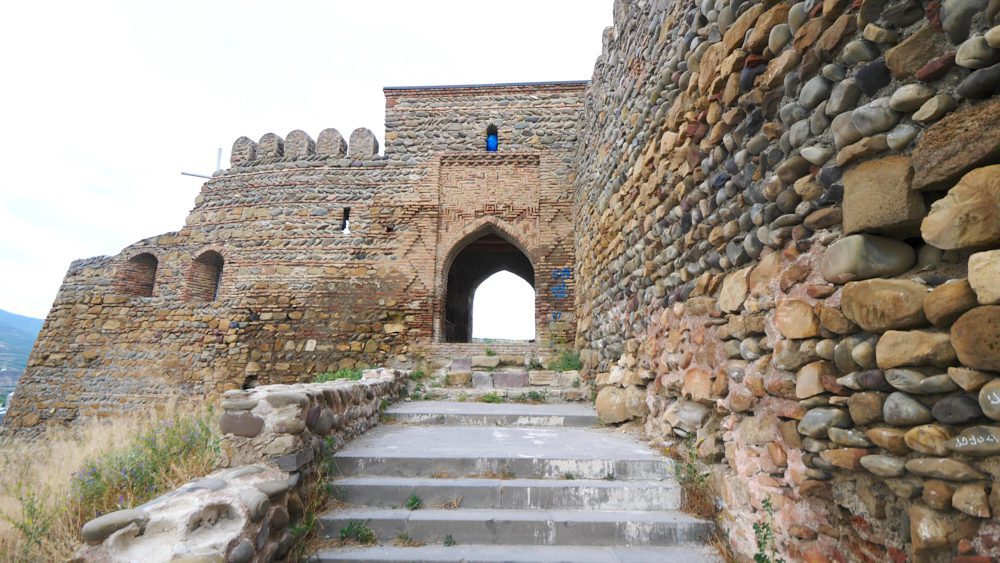
The walls of the fortress are quite beautiful and make their way down the hill, all the way to the ground. You’ll also find a large cistern at the top, which collected water. But beyond the history, one of the real draws here is the view. From the fortress, you can enjoy 360-degree views of Gori laid out below you. It’s stunning and easily one of the best things to do in central and western Georgia!
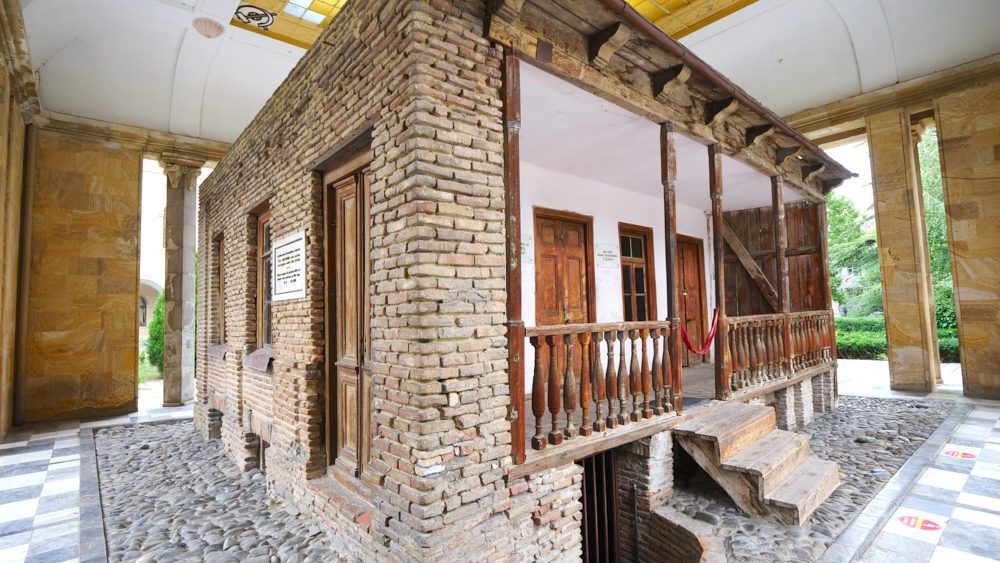
Of course, one of the darker aspects of Gori is that it is the birthplace of Joseph Stalin, the brutal dictator from the days of the U.S.S.R. In the center of town is the Joseph Stalin Museum, which explores his life and rise to power.

The museum is located in his old home, a typical village house that they disassembled and rebuilt on-site. It was here that a young Joseph Stalin lived the first four years of his life, from 1879 to 1883. Also on the site is his private train car, which he used to travel around the U.S.S.R. It’s a fascinating and sobering look into the life of one of the world’s most notorious men.

The beating heart of Gori is Gori Bazaar, a large produce and flea market near the city center. I visited recently after a fire burned down the market, so the market had been moved to a bus station nearly 20 minutes away. Nearby is a wonderful bakery where you can try a sweet bread called kada and a bread stuffed with bean paste called lobiani. Don’t forget their flaky, delicious tonis puri!

The bazaar itself is covered, and I found that you can find just about anything there. Vendors sell everything from tools and household items to clothing to fresh fruit and vegetables. I met a woman there who sold fresh walnuts, wine, and dried chilies.

Another sold sala, or spice-covered pork belly, which was spicy and delicious! I also came across a man who repairs sewing machines. The vendors were all kind and friendly, and offered me so many free samples I didn’t know what to do with them. One woman even gave me a free bottle of wine!

As a major history buff, it’s hard to top ancient sites for me. Just outside of Gori is a site called Uplistsikhe Cave Town. It was the largest city in ancient Georgia and is, unsurprisingly, the most popular attraction in the area. The entry fee is just GEL 15, or about $5 USD, and it’s more than worth it. It’s easily one of my personal favorite things to do in central and western Georgia.

I’d visited a similar-looking cave village during my time in Armenia back in 2019. It also sort of reminded me of Cappadocia in Turkey. The site is made up of various cave dwellings that were inhabited by thousands of people at its height in the 12th century.
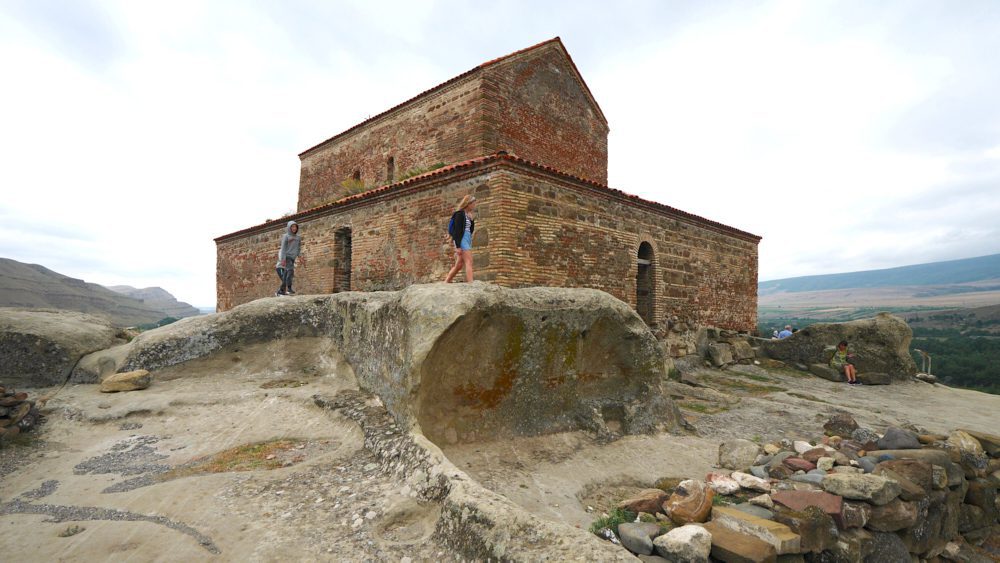
Unfortunately, parts of the cave city are in ruin due to invaders and an earthquake. But you can see the main road, fortifications, homes, wells, a cathedral, and the main tower. The dwellings themselves are really impressive, though they’ve been weakened by the earthquake. The ceilings are now held up by newly-constructed pillars.

Nearby is Queen Tamar’s Hall, a structure that has mostly collapsed. It dates back to the 12th or 13th century and belonged to a queen who became king! You can see the remains of her wine cellar and qvevries, and further on are the ruins of a three-nave cathedral. The views over the area are also spectacular.

Historically considered one of Georgia’s major cities, Kutaisi is one of the oldest continuously inhabited cities in the world. It’s located along the Rioni River in western Georgia and is the capital of the Imereti Region.

It was also the political center of Colchis, a Greco-Roman region that bounded the eastern shore of the Black Sea. It is believed that Kutaisi was also the final destination of Jason and the Argonauts in the Greek epic Argonautica.

Today, Kutaisi is almost two cities in one: an old, historical city nestled between hills; and a more modern city built by the Soviets. It’s the artistic capital of Georgia and is known for its musicians, writers, and artists!

If you’re traveling to Kutaisi from the national capital, Tbilisi, you’ll pass through the town of Surami. It’s located roughly midway between the two cities and is home to a popular shop called Nazuki Sergo. The shop, along with local women on the side of the road, sells sweet breads called nazuki.

The bread contains cinnamon and raisins, and comes hot and fresh out of the tone oven. It’s a beautiful golden brown, and has a nice crisp texture on the outside. I loved the chewiness and the cinnamon, and the fruity burst from the raisins. It’s the perfect snack to eat as you continue toward Kutaisi!

One spot you must visit in Kutaisi is Tsentraluri Moedani Square. Bounded by buildings whose architecture reminded me of my time in Veliko Tarnovo in Bulgaria, this square is home to a grand fountain. Colchis Fountain is an ornate fountain that features replicas of ancient Georgian relics.

There are even references to the Golden Fleece on the fountain. The fountain itself is a tribute to the Kingdom of Colchis, which existed from the 13th century BC to 131 AD. It’s a beautiful spot to relax or meet up with friends!
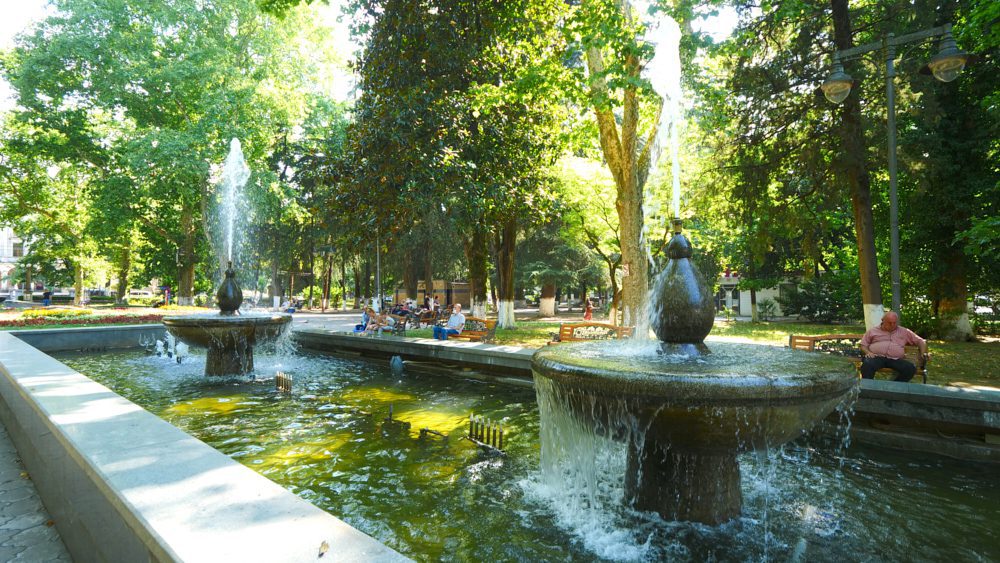
Western Georgia is hillier and warmer than the more mountainous eastern part of the country. That makes locations like Kutaisi Park, a large recreational space in town, a lot more enjoyable! It’s a beautiful space full of fountains and sculptures. It was the perfect place to go for a stroll on a late summer afternoon!

One of the more fun things I did there was meet a woman with a scale who will weigh you for a penny! I’d been eating a lot on this trip, so I was a little heavier than usual, but she was so sweet and fun!

Just a short walk from Kutaisi Park will take you past the Kutaisi State Opera and Ballet Theatre and to Bikentia’s Kebabery. This extremely popular tavern only sells kebabs and beer! When you visit a spot that only sells one thing, you know it’s bound to be good. It’s the perfect spot to grab a delicious Georgian street food lunch.

Tim and I ordered an order of beef and pork kebabs, which were served in a rich tomato sauce with onions and cilantro on top. The meat had been minced, shaped, battered, and fried, so it had a nice crust on the outside.

I couldn’t get over how tasty they were. The hearty tomato sauce, pungent onions, and minced beef and pork made for some of the best kebabs I’ve ever eaten! Without a doubt, having them is among the top things to do in central and western Georgia!

On the other side of the Chain Bridge in town is Bagrati Cathedral. It dates back to the 11th century, but the current version is fairly new. The Ottomans destroyed the original cathedral in the 17th century, and reconstruction on it only began in the mid-20th century. They finally completed it in 2012.

It’s easy to see which areas of the cathedral are older, as there’s a modern addition that doesn’t really mesh with the older architectural style. Outside, you’ll find some old pillars, and inside, the differences between the new and old are even starker. The new additions, unfortunately, caused the cathedral to be removed from the list of UNESCO World Heritage Sites.

Outside on the lawn is a large iron cross standing in the grass. And just beyond it, you can enjoy some stunning views of Kutaisi below. It’s the best vantage point of the entire city!

In my opinion, visiting local markets is one of the best ways to learn about a city and its people. When you’re in Kutaisi, I highly recommend heading out to the Green Bazaar in the city center. It’s a massive covered market where you can buy produce, home goods, wine, food, and more. It’s also the oldest market in town!

The market is expansive and is divided into several sections, so I suggest spending at least a couple of hours there. You really can find just about anything there: watermelon, plums, currants, blueberries, nadughi cheese, beans, chilies, onions, potatoes, eggplant, and spices.

I met a vendor who let me try some spicy Svaneti salt, as well as peach chacha and brandy. Elsewhere, in the meat section, you’ll find fresh chickens being torched to remove the feathers, and butchers chopping up beef legs. It’s one of the top things to do in central and western Georgia and is quite the spectacle!

If you get hungry in between snacking and browsing, head over to Bread & Wine Bistro. They bake fresh breads like lobiani and Imeruli khachapuri. I loved the pasty bean filling inside the warm, crispy lobiani. I also couldn’t get enough of the smoky Imeruli cheese on the khachapuri. Wash it down with a semi-sweet red wine for just GEL 7.20, or roughly $3 USD.

Another small village in western Georgia, Meore Obcha is all about Georgian wine culture. It’s located roughly 30 minutes south of Kutaisi and makes for a nice day trip. There are three popular wineries in the area, but as I was on a time crunch, I only visited one!

Of the three popular wineries in Meore Obcha, Baia’s Winery is by far the most well-known and best-reviewed. Its owner, Baia, is a young woman who specializes in making wines from indigenous grapes. I learned that some of the best Imereti wines are produced by her! She’s also a whiz at Imereti cuisine. Eating her food is, by far, one of my favorite things to do in central and western Georgia.

Baia and her sister Gvantsa grow three white Imeretian grape varieties and two red varieties. When you visit and tour the property, you’ll get to see the vineyards, as well as the qvevri room, and the aging space. If the weather is nice, you’ll get to sample several of their wines on their outdoor terrace. I loved their 2020 Aladasturi Rose and their syrah-like Ostkhanuri Sapere 2020!

While Baia showed off their impressive wines, Gvantsa was preparing an Imereti feast including the eggplant stuffed with nigvzis sakmazi. This walnut paste with garlic is a staple in Georgian cuisine, and it’s even good by itself! Gvantsa even hand-fed me some so I could sample it!

The stuffed eggplant, or nigvziani badrijani, was creamy and fresh, and the bulgaruli nigvzit (stuffed red peppers) had a nice amount of spice and vinegar. They put a healthy amount of garlic in the wild thorns tkhali, and their lobio satsivi (breen beans with walnut paste) blew my mind with its freshness and earthiness. There was also a beautiful and cheesy khachapuri.

Best of all, the whole experience only costs GEL 50/$16 USD, and you can stay overnight for GEL 100/$33 USD!

Known as Makharadze from 1934 to 1989, Ozurgeti is a subtropical city built atop the subterranean Natanebi River in western Georgia. Ozurgeti dates back to the late Middle Ages, when it became a popular center for trade. It’s the capital of the Guria province and is located just one hour northeast of Batumi. It’s a great day trip from Batumi, but you’ll also pass through it if you’re driving from Meore Obcha to Batumi.
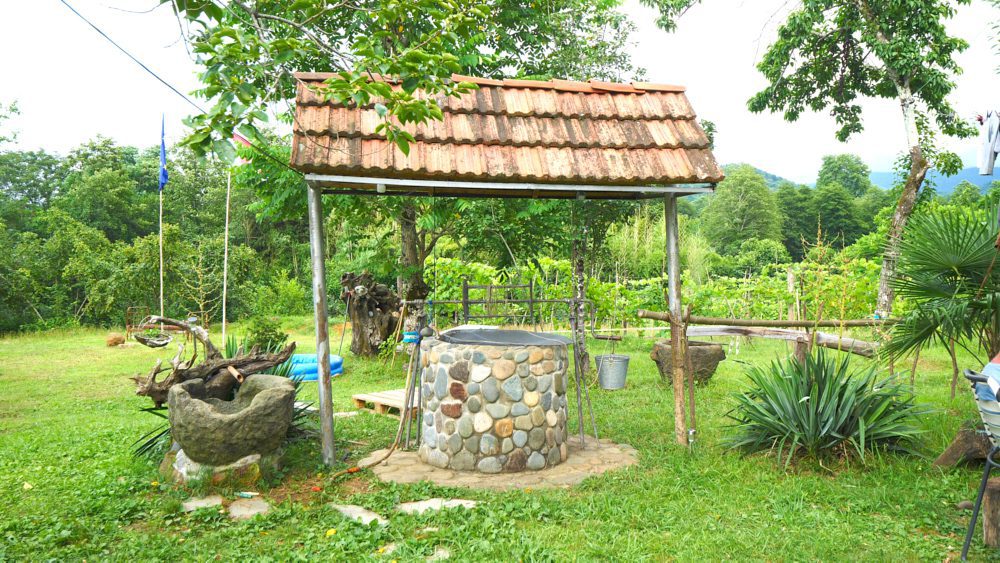
My time in Ozurgeti was limited, but I made sure to carve some out to visit Komli, a local eco-farm. As you might expect, an eco-farm in Guria specializes in Gurian cuisine, as well as Gurian wine and tea. It’s a must, and is on my list of things to do in central and western Georgia for a very good reason!

Komli is run by a family who happen to be friends with Tim, and consists of their ancestral home and the surrounding grounds. The grounds are home to a tree house, a unique accommodation made from a massive wine barrel, a tea garden, and a fruit and vegetable garden. Also bordering the property is a river where you can ride a small, wooden rowboat.

Tim, who owns a local tea company, brewed us some tea using tea leaves he’d picked from the garden. We followed that with an amazing Gurian meal of chikirtma (chicken soup), nigvziani badrijani, mchadi and kveli (corn fritters with cheese), and more!

The nigvziani badrijani was spectacular, as always, but had a different taste due to the local spices in it. They also served some unreal baked onions with walnut paste, and the mchadi with cheese blew my mind in every way.

I also highly recommend the creamy lobio and the fresh ajapsandali, or vegetable stew. The chicken-rich chikhirtma had a nice sourness to it and felt like a good cold remedy or hangover cure! Finish up with some pear chacha—look out, it’s strong—to wash it all down!

Georgia may be a small country, but there is so much to see and do in its central and western regions that you need several days, or even up to a week, to explore it properly. However truncated my time was there, I thoroughly enjoyed visiting these places. As good as the food was, and as interesting as the history is, it’s the kindness, warmth, and hospitality of the people that have stuck with me. It’s one of the reasons why this country is so special to me. Book a trip to Georgia today to experience it all for yourself!
NOTE: If you need to check the visa requirements of a particular country, click here. To apply for a visa, find up-to-date visa information for different countries, and calculate the cost of a particular visa, click here!
Counter
101 Countries • 1432 Cities